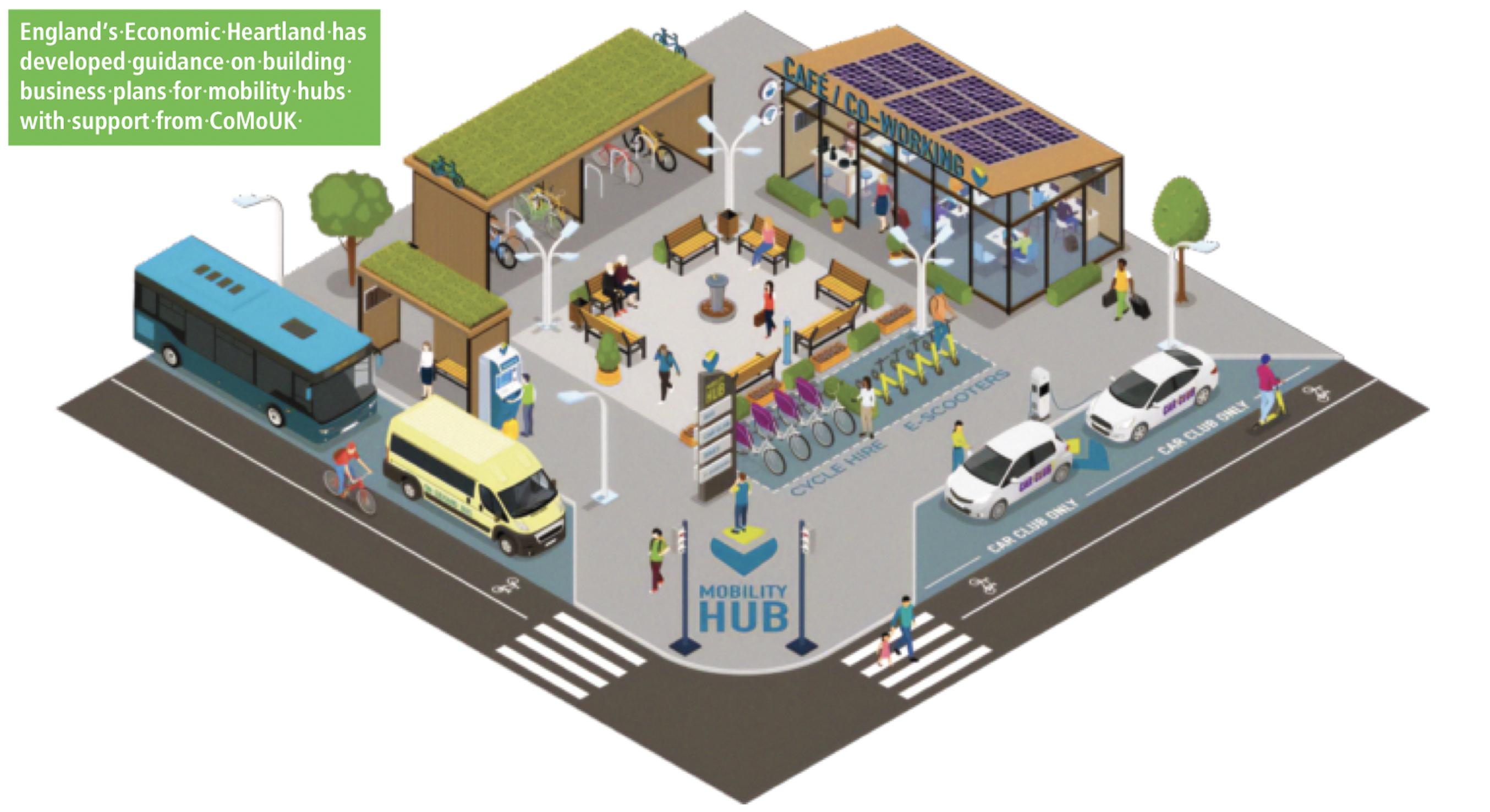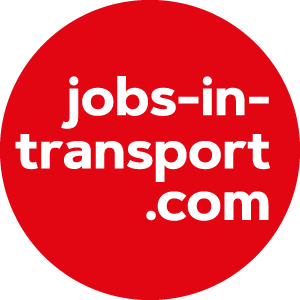
Mobility hubs will play a pivotal role in creating a connected, efficient and environmentally friendly transportation network, says England’s Economic Heartland (EEH), the sub-national transport body for the region stretching from Swindon across to Cambridgeshire and from Northamptonshire down to Hertfordshire.
EEH advises the government on the transport infrastructure, services and policy framework which will realise the region’s economic potential while supporting the journey to net zero.
In 2023 the organisation published in-depth guidance on how to develop business cases for mobility hubs, particularly in more rural areas. EEH’s guidance supports local authorities in the region – and across the country – as they plan visible, safe, and accessible spaces where public, shared and active travel modes are co-located.
The guidance was developed with support from shared mobility charity CoMoUK and input from EEH’s partner authorities at Milton Keynes Council, Oxfordshire County Council and Hertfordshire County Council. It provides practical advice on developing the strategic, economic and financial cases for mobility hubs, including consideration of optioneering, appraisal and logic mapping. The guidance, which received positive feedback from the Department for Transport, is framed by three scenarios in which mobility hubs could be created – rural village, rural station and a peri-urban environment.
To complement the Mobility Hubs Business Case Guidance, EEH is developing a Mobility Hubs Strategic Location Tool.
Trevor Brennan is transport implementation lead at England’s Economic Heartland. Speaking at Mobility Hubs 2024, he said: “Today we have more ways to get around our towns and cities, and rural hinterlands to a lesser degree, than ever before – from bike sharing to e-scooters, car-sharing to on-demand services. But the many benefits of this expanding menu of options can only be realised if they are integrated into a coherent network of efficient transportation options that let people get where they need to go, using whatever mode makes the most sense and at any particular trip, time or journey purpose. Enter the mobility hub, a place where people can seamlessly connect with multiple modes of transportation in a safe, comfortable, and accessible environment.”
Mobility hubs provide physical integration among modes, with their physical presence and clear, prominent branding, these spaces offer visibility to and connection between public transport and shared mobility services that in turn support multi-modal living and reduced dependence on single occupancy car use.
“A mobility hub can mean many different things to many different audiences,” Brennan said. “Mobility hubs are highly visible, safe and accessible spaces where public, shared and active travel modes are co-located alongside improvements to public realm and where relevant enhanced community facilities can be found. Mobility hubs hold immense promise. However, overcoming these challenges requires strategic planning, collaboration, and adaptability.”
Brennan says EEH local transport authorities (LTAs) are looking at ways of increasing awareness and usage of mobility hubs, both when they are under development and once opened:
“Looking ahead,” Brennan continued, “the next steps to accelerating and enabling mobility hubs include: establishing and setting out an investable proposition to ‘market’ mobility hubs within the EEH region; facilitating a ‘triaging investment’ workshop – bringing together LTAs, private and public sector stakeholders; and offering direct consultancy support to EEH LTAs who wish to pursue delivery of e-mobility hubs.”
www.englandseconomicheartland.com

TransportXtra is part of Landor LINKS
© 2025 TransportXtra | Landor LINKS Ltd | All Rights Reserved
Subscriptions, Magazines & Online Access Enquires
[Frequently Asked Questions]
Email: subs.ltt@landor.co.uk | Tel: +44 (0) 20 7091 7959
Shop & Accounts Enquires
Email: accounts@landor.co.uk | Tel: +44 (0) 20 7091 7855
Advertising Sales & Recruitment Enquires
Email: daniel@landor.co.uk | Tel: +44 (0) 20 7091 7861
Events & Conference Enquires
Email: conferences@landor.co.uk | Tel: +44 (0) 20 7091 7865
Press Releases & Editorial Enquires
Email: info@transportxtra.com | Tel: +44 (0) 20 7091 7875
Privacy Policy | Terms and Conditions | Advertise
Web design london by Brainiac Media 2020